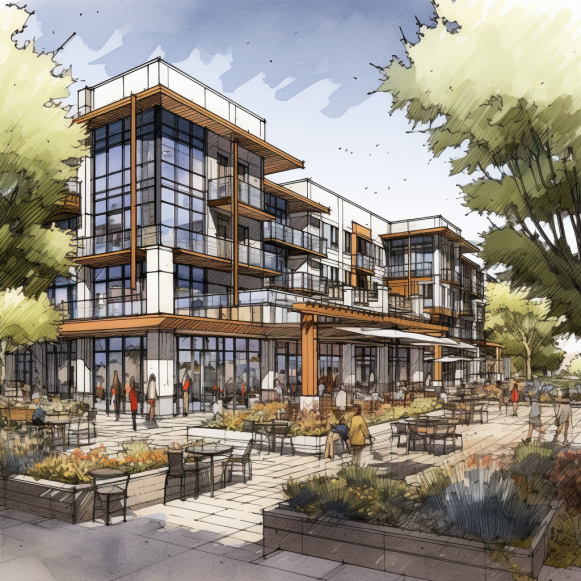Mold, roaches, security issues at San Jose homeless housing heighten broader concerns

The problems raise questions about San Jose’s plans to more than double its total homeless housing stock
After five years of living on the streets of San Jose, Cecilia Martin couldn’t believe her luck in landing an apartment at the city’s first long-term homeless housing site. But it didn’t take long for the new facility, which opened in 2019, to fall into disrepair.
Flooding, fires and cockroaches have since inundated the property, but her biggest worry is the intruders who stalk the hallway to her studio, said Martin, 53, a San Jose native. “I gotta watch my back all the time because you never know,” she said.
A few miles away, Laura Laform, a resident at a former motel north of downtown now used for homeless housing, fears a mold infestation in the aging city-owned building is threatening her health. Laform, 65, is desperately searching for another place to stay.
“It seems like I’m being ungrateful, but I’m watching myself deteriorate so bad,” she said.
The security and habitability concerns cast doubt not only on the city’s ability to oversee the two sites, which house at least 175 people, but also on the city’s plans to rapidly double its total homeless housing stock.
The issues, which have been documented in public records and interviews with a dozen residents, have surfaced as the state conducts a high-profile audit of the city’s homelessness spending. The city has invested tens of millions of dollars in funding and financing for the two facilities alone.
State Sen. Dave Cortese, a Democrat from San Jose who requested the audit, said it’s clear cities lack the capacity to manage and regulate homeless housing and are “finding out the hard way as these examples of blighted conditions and habitability issues start to crop up.”
Until recently, most local homelessness programs were overseen by county governments, which had larger budgets and public health agencies. However, as California’s homeless population has risen in recent years to an estimated 172,000 people, city officials across the state, under increasing public pressure to address the crisis, have begun to play a larger role.
San Jose officials and operators at the two sites insist they are making progress in resolving the issues and are committed to ensuring that homeless funds are spent wisely. They claim to have learned from their mistakes and are better prepared to ramp up efforts to bring the city’s estimated 4,400 homeless residents indoors.
“We don’t often allow the government to experiment or admit failure and learn from it,” Mayor Matt Mahan said. “However, from what I’ve seen, we’re definitely heading in the right direction.”
Across the Bay Area, homeless housing has been a problem in cities such as San Francisco, Mountain View, Milpitas, Vallejo, and Santa Rosa, despite unprecedented state and local homelessness spending in recent years. Nonetheless, experts agree that such facilities, which are designed to provide on-site social services, can be effective in providing residents with the stability they need to access mental health care, drug counseling, or other assistance.
According to researchers, San Jose’s homeless shelters, like those throughout the Bay Area, do not require residents to stop using drugs or enroll in job or mental health programs before moving in. According to Dr. Margot Kushel, director of UC San Francisco’s Benioff Homelessness and Housing Initiative, this means facilities must be well-maintained and capable of providing a wide range of services.
How many of California’s homeless are from other states?
However, staffing and funding shortages, combined with a severe shortage of very low-income housing, frequently force cities, counties, and nonprofits to relocate people to sites that may not be equipped to care for their most vulnerable residents, according to Kushel.
“There’s such incredible scarcity, and there’s such a compelling need not to turn people away,” she explained.
The ceremony begins with a ribbon cutting, followed by setbacks.
When San Jose’s first 100% long-term homeless housing complex, Second Street Studios, opened four years ago, city leaders hailed it as a watershed moment in the city’s fight to end homelessness. Repairs for flood and fire damage were draining the facility’s nonprofit owner, San Jose-based First Community Housing, of resources by 2022, according to city reports, as the site hemorrhaged about $30,000 per month.
Some of the damage is described in code enforcement records, including an explosion “caused by improper use” of a portable cooking appliance. Unauthorized visitors, who residents claim make threats to gain entry into the building, are also a source of concern, according to city reports. According to police data, there have been at least 180 emergency calls in the immediate area near the Spartan Keyes neighborhood since the beginning of this year, reporting trespassing, criminal threats, and assault with a deadly weapon, among other incidents.
Martin, a Second Street resident who pays $318 per month in rent, said she’s been assaulted several times on the property and that she often feels safer living in encampments. “I can get away there.” “I can change locations,” she explained. “Here, you’re stuck in this building.”
Residents with substance abuse and mental health disorders, according to San Jose and Second Street officials, are contributing to the problems. Some tenants also struggle to keep their units clean or use kitchen appliances safely, which can lead to pests, mold, and other damage, according to officials.
“It’s not easy when you’re in the middle of a building with really high-needs people,” said Katie Fantin, vice president of Abode Services, Second Street’s service provider, which has a 12-person team assigned to the site.
Despite residents’ complaints, officials claim that conditions have improved in recent months, citing building renovations to reduce flooding caused by broken pipes or appliances, as well as safety measures such as security cameras. According to city documents, the upgrades were partially funded by a $13 million loan from the city, bringing San Jose’s total investment in the 135-unit property to around $37.5 million.
Overwhelmed by difficulties
The conversion of the former Best Western SureStay motel into homeless housing, like Second Street, was hailed as a significant step forward in San Jose’s response. The city received $12 million from California’s $3.75 billion Homekey homeless housing program in 2020 to help buy and renovate the 76-unit property, making it one of the state’s first such awards.
By the end of the year, the housing authority hopes to have taken over the site for redevelopment. However, living conditions appear to have deteriorated prior to the handover. Mold, roaches, and other issues were discovered by code inspectors in at least five units in July.
“It’s just cockroaches, ants, and nasty stuff,” said John Powell, a resident.
City officials blamed some of the issues on the challenges of housing high-needs residents — who, for the time being, do not pay rent — but said bringing the property into compliance as soon as possible is a top priority.
Residents have also complained that on-site staff does not treat them with dignity and respect, with some claiming retaliation for protesting the living conditions last month.
LifeMoves, which operates facilities throughout the Peninsula and South Bay and has faced similar allegations in the past, said in an email that it respects “everyone’s right to voice their opinions” and was “not aware of any retaliation at the site.”
Despite difficulties, more sites are being developed.
Despite recent setbacks, San Jose plans to open at least four more Homekey-funded sites, totaling 400 units of permanent and temporary homeless housing. The mayor has also launched a widely publicized plan to build 1,000 tiny homes and prefabricated cabins for short-term stays.
With the state audit results expected by the end of the year, Mahan remains optimistic that the city will be able to meet its objectives, but he’s not opposed to turning over more of the sites to the county or even the state. Furthermore, the city only started building homeless housing because of “the incredible gaps in the system today,” he explained.




